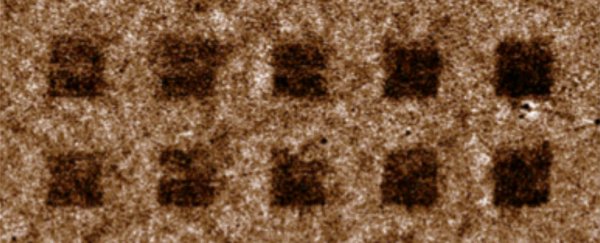Scientists in the US have figured out how to magnetise large areas of graphene, which they say could revolutionise our current technique for storing data.
Graphene the wonder-material has got some pretty strange properties, but one of the most unexpected is magnetism. Over the past 10 years, researchers have been intensely investigating the various characteristics of this multi-purpose material - made from multiple stacks of 1-atom-thick carbon layers - and have only been able to explain its occasional magnetism though manufacturing defects or through the binding of certain chemical groups that give it this property.
But making graphene reliably electromagnetic - and therefore usefully electromagnetic - has proven difficult. Until now, because a team from the US Naval Research Laboratory have just figured out how to achieve what they're calling "a simple and robust means to magnetise graphene", over a large array of the material, and they do it using plain old hydrogen.
The technique, which they've outlined in the journal Advanced Materials, involves sitting some graphene on a silicon wafer, which they will submerge in a pool of cryogenic ammonia and lithium for about a minute. They then add hydrogen atoms to the mix, which renders the graphene electromagnetic. "This method of hydrogenation gives us access to a much wider range of hydrogen coverage than previous methods allowed," one of the team, chemist Keith Whitener, said in a press release.
"I was surprised that the partially hydrogenated graphene prepared by our method was so uniform in its magnetism and apparently didn't have any magnetic grain boundaries," his colleague, Paul Sheehan, added.
The technique is also adjustable - you can turn the magnetic strength up and down using an electron beam that can shave off hydrogen atoms when there are too many in the mix. It does this by breaking the chemical bond between the graphene and the hydrogen, which renders the graphene no longer magnetic. What this also allows is for "magnetic patterns" - which means data - to be written into the graphene structure.
"Since massive patterning with commercial electron beam lithography system is possible, we believe that our technique can be readily applicable for current microelectronics fabrication," lead researcher and materials research scientist Woo-Kyung Lee, said in the press release.
The team says that if you integrate their magnetised graphene into a new type of storage medium, it will result in "a roughly greater than million-fold improvement over current hard drives".
Can we come up with enough data to fill that kind of capacity? Challenge accepted!
